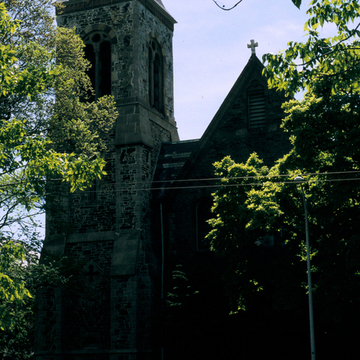Built for the Shepard Congregational Society, the First Church Congregational reflects changes in interpretations of Gothic architecture forty years after First Parish Church
You are here
First Church Congregational
1870–1873, Abel C. Martin; 1938 tower redesign, Allen, Collens and Willis. 11 Garden St.
If SAH Archipedia has been useful to you, please consider supporting it.
SAH Archipedia tells the story of the United States through its buildings, landscapes, and cities. This freely available resource empowers the public with authoritative knowledge that deepens their understanding and appreciation of the built environment. But the Society of Architectural Historians, which created SAH Archipedia with University of Virginia Press, needs your support to maintain the high-caliber research, writing, photography, cartography, editing, design, and programming that make SAH Archipedia a trusted online resource available to all who value the history of place, heritage tourism, and learning.











